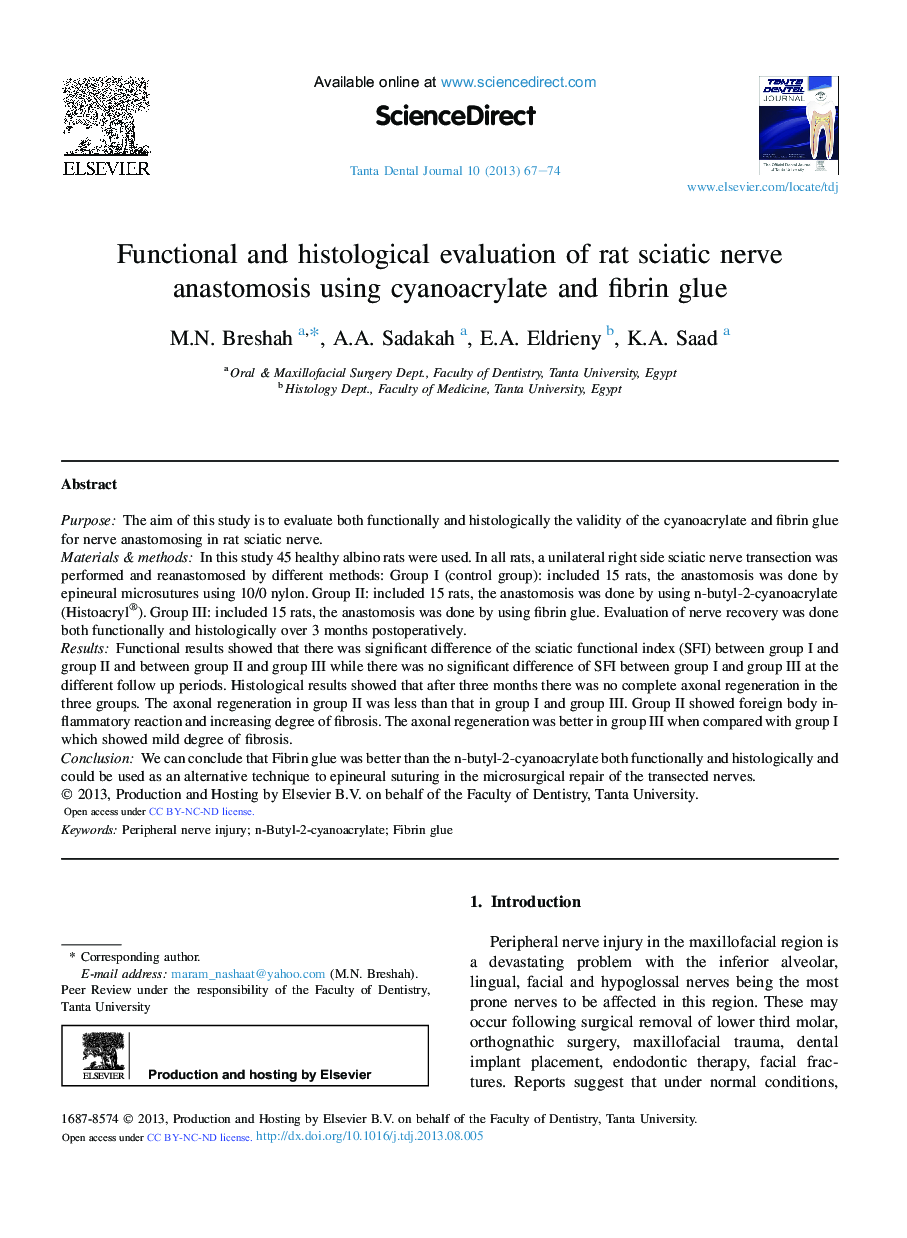| Article ID | Journal | Published Year | Pages | File Type |
|---|---|---|---|---|
| 3179708 | Tanta Dental Journal | 2013 | 8 Pages |
PurposeThe aim of this study is to evaluate both functionally and histologically the validity of the cyanoacrylate and fibrin glue for nerve anastomosing in rat sciatic nerve.Materials & methodsIn this study 45 healthy albino rats were used. In all rats, a unilateral right side sciatic nerve transection was performed and reanastomosed by different methods: Group I (control group): included 15 rats, the anastomosis was done by epineural microsutures using 10/0 nylon. Group II: included 15 rats, the anastomosis was done by using n-butyl-2-cyanoacrylate (Histoacryl®). Group III: included 15 rats, the anastomosis was done by using fibrin glue. Evaluation of nerve recovery was done both functionally and histologically over 3 months postoperatively.ResultsFunctional results showed that there was significant difference of the sciatic functional index (SFI) between group I and group II and between group II and group III while there was no significant difference of SFI between group I and group III at the different follow up periods. Histological results showed that after three months there was no complete axonal regeneration in the three groups. The axonal regeneration in group II was less than that in group I and group III. Group II showed foreign body inflammatory reaction and increasing degree of fibrosis. The axonal regeneration was better in group III when compared with group I which showed mild degree of fibrosis.ConclusionWe can conclude that Fibrin glue was better than the n-butyl-2-cyanoacrylate both functionally and histologically and could be used as an alternative technique to epineural suturing in the microsurgical repair of the transected nerves.
